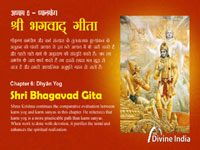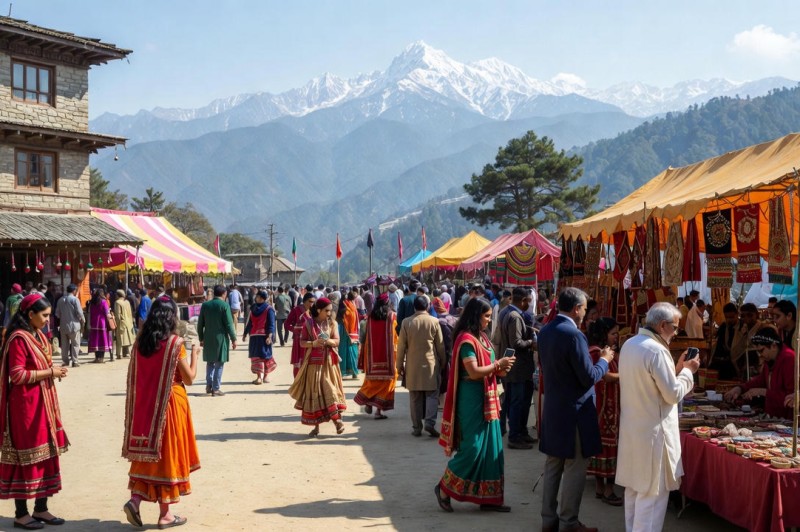

In Hinduism, the concept of divine incarnations is not limited to male deities; it extends gracefully to the divine feminine as well. Goddess, the embodiment of Shakti, manifests in various forms to protect and preserve dharma. Let's delve into the sacred narratives that weave the stories of the avatars of Devi, each radiating unique attributes and cosmic energies.
Durga - The Invincible:
Durga, the warrior goddess, is a symbol of strength and fearlessness. She incarnated to combat the buffalo demon, Mahishasura, and her victory symbolizes the triumph of good over evil.
Lakshmi - The Goddess of Wealth:
Lakshmi, the epitome of beauty and prosperity, incarnated to bless the world with abundance. Her divine presence is invoked for wealth, well-being, and spiritual prosperity.
Saraswati - The Goddess of Knowledge:
Saraswati embodies wisdom, art, and learning. Her avatar is invoked by seekers of knowledge, artists, and students seeking intellectual enlightenment.
Parvati - The Divine Mother:
Parvati, the loving consort of Lord Shiva, incarnated as the nurturing mother. Her avatars, including Annapurna and Gauri, showcase different facets of her maternal and protective nature.
Kali - The Fierce Warrior:
Kali, the fierce form of Devi, incarnated to vanquish the demon Raktabija. Her intense energy is revered for destroying negativity and ignorance.
Sita - The Ideal Consort:
Sita, an avatar of Lakshmi, is celebrated for her virtue and devotion. Her life with Lord Rama in the epic Ramayana illustrates ideal marital values.
Radha - The Divine Lover:
Radha, the beloved of Lord Krishna, symbolizes pure and selfless love. Her devotion to Krishna is an inspiration for seekers of divine union.
Ganga - The River Goddess:
Ganga, a manifestation of Devi, descended to Earth to cleanse and purify. Her sacred waters are revered in Hindu rituals and mythology.
Sati - The True Devotee:
Sati, the first wife of Lord Shiva, incarnated to express her unwavering devotion. Her life showcases the significance of devotion and sacrifice.
Tara - The Compassionate Goddess:
Tara, a gentle manifestation of Devi, is revered for her compassion and healing powers. She provides solace to those in distress.
Katyayani - The Warrior Goddess:
Katyayani, born from the sage Katyayana, incarnated to annihilate the demon Mahishasura. Her valor and courage inspire worshippers seeking strength.
Nanda Devi: Revered goddess in the Himalayas
Nanda Devi, revered in Hinduism, is a goddess symbolizing the majestic Himalayan peak bearing her name. Considered a protective deity, her worship is deeply rooted in the Himalayan cultures. Devotees seek her blessings for the well-being of the mountainous regions and view her as a guardian of their sacred landscapes.
Raktadantika: Mother's form is bloody and four-armed.
Goddess Raktadantika is a fierce manifestation of Mother Parvati. She assumed a formidable form to annihilate the demon Vaiprachiti. Devouring these demons turned her teeth as red as pomegranate seeds, earning her the name Raktadantika. Adorned in red attire, wielding a radiant sword, this avatar symbolizes divine strength and protection.
Shatakshi Devi: Goddess with a hundred eyes symbolizing vigilance
Goddess Shatakshi Devi is a divine form of Mother Parvati, the primordial power and Bhuvaneshwari Mata. Shatakshi Devi, an embodiment of vigilance, is a divine manifestation with a hundred eyes. Symbolizing the watchful and protective aspect of the divine, she is revered for her grace and significance.
Bhramari: Bee-associated goddess, symbolizing health
Bhramari, a revered Hindu goddess, is considered an incarnation of Shakti, responsible for vanquishing the demon Arunasura. Bhramari Devi, an embodiment of Jagadamba Bhavani Shakambhari, has a renowned temple in Banbhauri, Haryana. The idol of Bhramari Devi, facing north, is also enshrined in the sacred precincts of Shambharanand Bhairav, associated with Mallikarjuna Jyotirlinga, atop a mountain in Andhra Pradesh's Kurnool district. The divine narrative of the goddess finds expression at the Shri Shailam temple, where she is venerated as Bhramarambika or Bhramari Devi, commemorating one of the 51 holy Shakti Peethas. The temple, symbolizing the divine union of Mata Sati and Lord Shiva, holds significant mythological and historical importance.
Vaishno Devi: Associated with the sacred Vaishno Devi shrine
Vaishno Devi or Shri Mata Vaishno Devi Temple, according to Hindu belief, Maa Adishakti Durga is the form of Maa Vaishno Devi, who is also known by the names Trikuta and Vaishnavi. Vaishno Devi, linked to the revered Vaishno Devi shrine, holds immense spiritual significance. Pilgrims embark on a challenging journey to the sacred cave, dedicated to Mata Vaishno Devi, seeking blessings and divine grace. The pilgrimage is a testament to faith, devotion, and the goddess's omnipotent presence in the Hindu tradition.
Chamunda Devi: Fierce form worshiped for protection
Chamunda Devi, a formidable deity worshipped for protection, embodies the fierce aspect of the divine. Devotees revere her for strength and safeguarding against adversities. The worship of Chamunda Devi reflects a deep connection with the powerful and protective forces in Hindu spirituality.
Vindhyavasini Devi: Goddess associated with the Vindhya mountain range
Vindhyavasini Devi, revered as the goddess associated with the Vindhya mountain range, holds a significant place in Hindu mythology. Devotees seek her blessings for strength and divine support. The connection between the goddess and the sacred Vindhya mountains reflects the spiritual reverence for nature in Hindu traditions. Mother Vindhyasini assumes three forms situated on the Trikon Yantra where Mother Adishakti herself is present in the form of Mahalakshmi Vindhyavasini, Ashtabhuji i.e. Mahasaraswati and Mahakali situated in Kalikhoh. According to the belief, the existence of this area can never end even before the beginning of creation and even after the cataclysm.
Hinglaj Bhavani: Worshiped for immense power and grace
Hinglaj Bhavani, venerated for her immense power and grace, is a revered goddess in Hinduism. Devotees seek her blessings for strength, protection, and spiritual well-being. The worship of Hinglaj Bhavani reflects the deep spiritual connection between devotees and the divine, fostering devotion and gratitude. Hinglaj is an important pilgrimage site located in the Makran Desert in the south of Balochistan region of Pakistan.
Jwala Devi: Goddess of eternal flame worshiped at Jwala Ji temple
Jwala Devi, the goddess of the eternal flame, is revered at the Jwala Ji temple. Devotees flock to seek her blessings and witness the perpetual flame, a symbol of divine power. The sacred shrine of Jwala Devi holds significance in Hindu spirituality, attracting pilgrims in search of spiritual enlightenment.
These divine incarnations of Goddess Devi showcase the multifaceted nature of the feminine divine. Each avatar, with its distinct qualities, serves as a source of inspiration, guidance, and divine energy for devotees on their spiritual journeys.